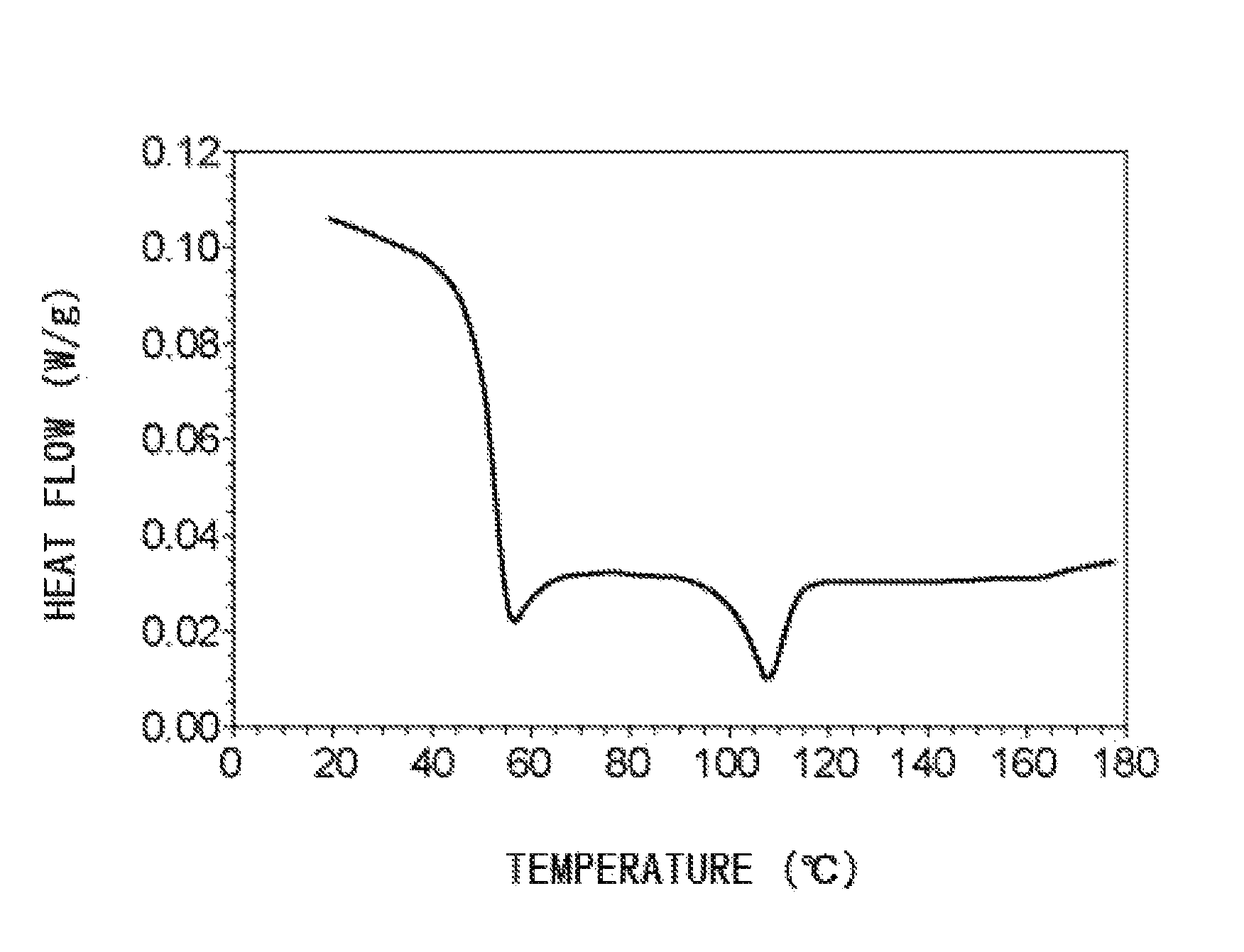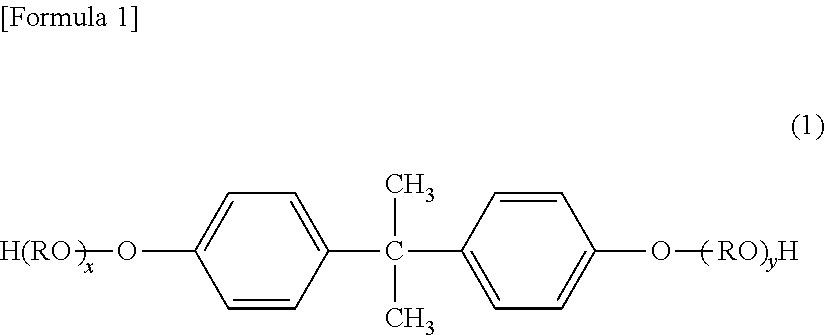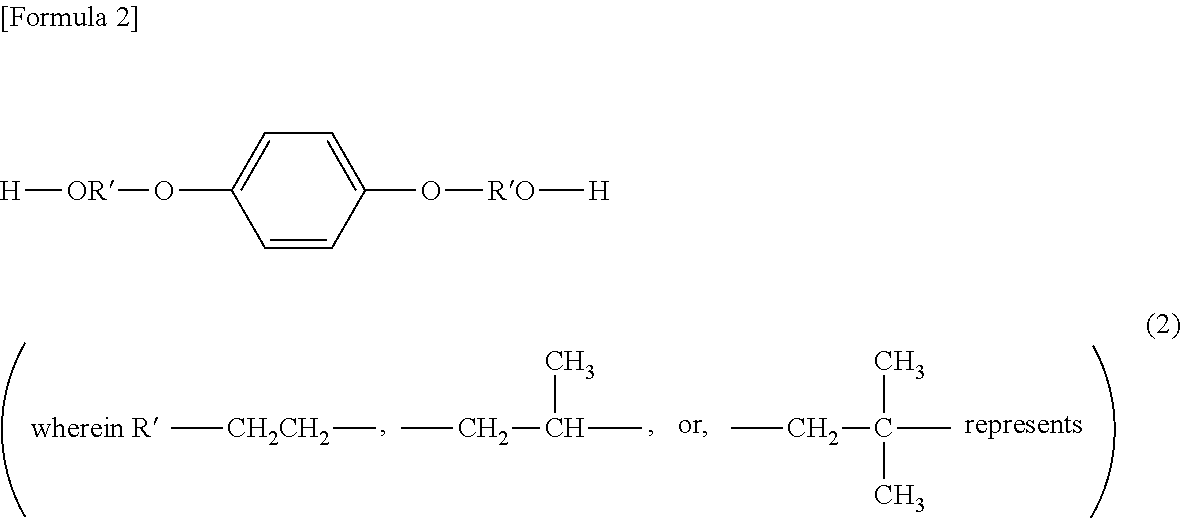Toner
a technology of electrophotography and toner, which is applied in the field of electrophotography, can solve the problems of reduced blocking resistance and blocking resistance at a high temperature, insufficient demonstration of the effect of the crystalline component contained, and loss of crystallinity or reduction in many cases, so as to achieve good low-temperature fixing properties, high stability in long-term storage, and low-temperature blocking resistance
- Summary
- Abstract
- Description
- Claims
- Application Information
AI Technical Summary
Benefits of technology
Problems solved by technology
Method used
Image
Examples
examples
[0140]Hereinafter, the present invention will specifically be described with reference to Examples. However, the present invention will not be limited by these.
embodiment 1
[0141]
[0142]
Terephthalic acid100 mol parts Ethylene glycol60 mol partsNeopentyl glycol40 mol parts
[0143]The polyester monomer and an esterification catalyst (dibutyltin oxide) were placed into a 5 liter autoclave. To the autoclave, a reflux cooler, a moisture separator, an N2 gas introducing pipe, a thermometer, and a stirrer were attached. While N2 gas was introduced into the autoclave, a polycondensation reaction was performed at 230° C. The reaction was performed while a degree of the progression of the reaction was monitored using viscosity. When the monitored viscosity reached the target viscosity, 5 mol parts of trimellitic anhydride was added. The relationship between the viscosity and the molecular weight was separately confirmed, and the target viscosity was determined in advance. After the reaction was completed, the produced resin was extracted from the container, cooled, and pulverized to obtain Binder Resin 1. The physical properties of Binder Resin 1 are as shown in Ta...
example 1-1
[0150]
Binder Resin 1100 parts by massMagnetic iron oxide particles 90 parts by mass(number average particle diameter = 0.20 μm,Hc = 11.5 kA / m, σs = 88 Am2 / kg,σr = 14 Am2 / kg)Polypropylene wax (VISCOL 660-P (made by 4 parts by massSanyo Chemical Industries, Ltd.)Charge Control Agent 1 having the structure below 2 parts by mass[Formula 3]
[0151]The materials were pre-mixed by a Henschel mixer, and melt kneaded as shown in Table 3 by a biaxial kneading extruder having the configuration of Ln / L=0.44 (L=110 cm).
[0152]The obtained kneaded product was cooled, crushed by a hammer mill and pulverized by a jet mill. The obtained pulverized powder was classified using a multi classifier using a Coanda effect to obtain magnetic toner particles having a weight average particle diameter (D4) of 7.0 μm and a negative charging property.
[0153]To 100 parts by mass of the magnetic toner particles, 1.0 part by mass of Hydrophobic Silica Fine Powder 1 [BET specific surface area of 150 m2 / g; 100 parts by ...
PUM
| Property | Measurement | Unit |
|---|---|---|
| glass transition temperature | aaaaa | aaaaa |
| glass transition temperature | aaaaa | aaaaa |
| temperature | aaaaa | aaaaa |
Abstract
Description
Claims
Application Information
 Login to View More
Login to View More - R&D
- Intellectual Property
- Life Sciences
- Materials
- Tech Scout
- Unparalleled Data Quality
- Higher Quality Content
- 60% Fewer Hallucinations
Browse by: Latest US Patents, China's latest patents, Technical Efficacy Thesaurus, Application Domain, Technology Topic, Popular Technical Reports.
© 2025 PatSnap. All rights reserved.Legal|Privacy policy|Modern Slavery Act Transparency Statement|Sitemap|About US| Contact US: help@patsnap.com



